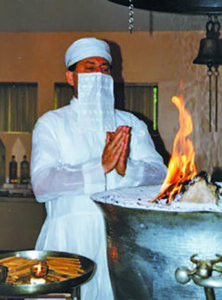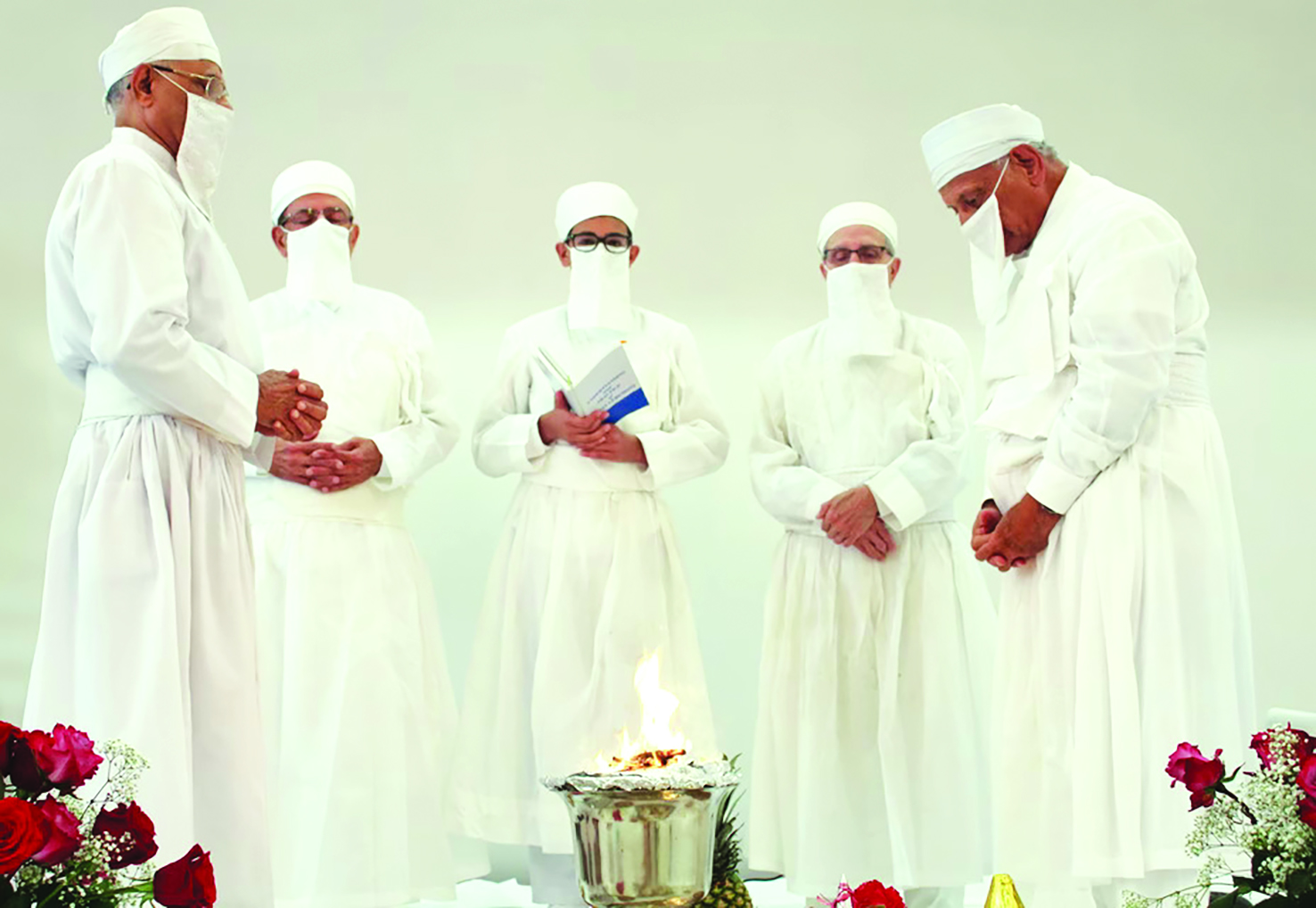 According to Firdausi’s Shahnameh, during the prehistoric Peshdadian times (i.e., even before the advent of Asho Zarathushtra) Iranian society was divided into four classes or professions – Arthravan or Priest, Ratheshtar or warrior, Vastriyosh or farmer and Hutaos or artisan. This was similar to the ancient Vedic Varna system of Brahmin (priest, teacher, intellectual), Kshatriya (warrior, king, administrator), Vaishya (agriculturalist, trader, farmer) and Shudra (worker, labourer, artisan).
According to Firdausi’s Shahnameh, during the prehistoric Peshdadian times (i.e., even before the advent of Asho Zarathushtra) Iranian society was divided into four classes or professions – Arthravan or Priest, Ratheshtar or warrior, Vastriyosh or farmer and Hutaos or artisan. This was similar to the ancient Vedic Varna system of Brahmin (priest, teacher, intellectual), Kshatriya (warrior, king, administrator), Vaishya (agriculturalist, trader, farmer) and Shudra (worker, labourer, artisan).
Today, among Zoroastrians, we have only two classes Arthravan (Athornan) or priests and Behdin or laity. The term Arthravan means ‘keeper of fire’ while Behdin means follower of the good religion. In the Zoroastrian tradition, priesthood is hereditary and only a child whose father is from a priestly family can be initiated as a priest.
Types Of Priests
The first step to priesthood is to be initiated as a Navar (Navbar) or bearer of good offering. Such a priest may perform outer liturgical ceremonies like Jashan. However, if the priest is also keen to perform higher inner liturgical ceremonies such as the Yasna (Ijashne), Baaj, Vendidad, Nirangdin etc., he must go through a second and higher initiation stage called Maratab, which means high-ranking.
In ancient times, there used to be several types of priests, organized into a hierarchy, whose functions have now been either deemed unnecessary or combined into others. During the Sassanid period, when Zoroastrianism was a state religion, priests had the power to declare punishments or prescribe penance through ritual purification and prayers.
The highest category of priest was the Matharan, who was considered very pious and also endowed with poetic abilities to compose sacred verses. Athravan were the keepers of the Holy Fire. A Zaotar was an officiating or presiding priest over ceremonies like the Yasna (Ijashne). Magi or Magu were a special class of priests endowed with occult knowledge, healing prowess and power of divination. They also interpreted dreams and performed divinatory rituals to portend future. They were confined to the western parts of ancient Iran and mostly served in the courts of kings.
Virtues Of A Good Priest
The Pahlavi texts refer to “Panch hem i asronan“, or five virtues that a priest must possess:
- Impeccable honesty and integrity.
- Pleasant disposition and practising (not just preaching) good thoughts, good words and good deeds.
- Be wise in his role a Dastur (Dastawar) and as a religious leader speak truthfully and teach the religion truthfully.
- Worship Yazdan (God) with faith, memorize the Nask (scriptural texts) and perform rituals properly.
- Be fervent in his priestly duties, abide by the confession of the faith (Deen no Kalmo) and fervently encounter those who are antagonist towards the good religion with truth, knowledge and wisdom.
Emphasis On Memorising
One of virtues of a priest includes memorising the scriptures. Even today, a full-fledged Zoroastrian priest is expected to memorise all the seventy-two Ha or chapters of the Yasna. In Gujarati Bohter means seventy-two and thus a priest who memorises all seventy-two chapters of the Yasna is called Bohteri kethelo Mobed.
In current times, we may view memorising as unnecessary. However, this virtue alone has helped preserve much of the corpus of the Avesta, despite periodic destruction of our sacred texts by hostile invaders like Alexander and the Arabs.
Zoroastrian scriptures consider trained memory as one of the most important qualities of a good Dastawar or Dastur. The Pahlavi Dinkard prescribes for priests ‘gasan ut hadoxt varm kartam’ i.e., priests should memorize the Gatha and the Hadokht. Had the priests not memorised the Gatha, we perhaps would have lost even these most ancient songs (Gatha) which are believed to have been composed and sung by Asho Zarathushtra.
Challenges To The Religion
During the Sassanid period, Zoroastrian priests faced enormous challenges from Christianity and Buddhism as also Zoroastrian cults started by Mazdak and Mani. Many Zoroastrians converted to these cults and religions and High Priests like Kerdir took a lead in not just stopping this trend but bringing apostate Zoroastrians back to the original faith.
In the Pahlavi Dinkard, we find reference to a Christian priest questioning Zoroastrian priests, as to why God proclaimed this faith (Zoroastrianism) in an unknown mysterious language (Avestan) and not as a complete, written text, but ordained it to be memorised by priests as oral tradition.
In response the Dinkard asserts: ‘En mansr ut den apastak harvisp-akasih veh menoken nazdbrahmiatar…’ (These Avesta manthra are entirely harvisp or spiritual knowledge…), and continue to state that this spiritual knowledge is a gift of Ohrmazd through Zarathushtra and to memorize this spiritual knowledge is of great advantage and the advantage lies in passing the knowledge of worship and praise of Yazdan to the people, so that the people know how to benefit from these manthra to live a good life.
The Dinkard concludes (in response to the Christian priest): “In this way (through memorisation and maintaining the oral tradition) it is possible to transmit profound words and true customs undistorted. Such is our way to transmit spiritual wisdom far beyond the written form, for living spoken words are more alive than the written texts.”
The Dinkard categorically asserts: ‘…tak che uzvan-awasparishnik pat dastawar mand estat,” meaning, “… including what had survived is by oral transmission through our Dastawar (Dastur) priests!”
Indeed, as a community, we are beholden to our priests for keeping the very core of the Zoroastrian religion alive through the oral and ritual tradition. Over the centuries, had our priests not memorised the Avesta, we would not even have with us the Gatha of Zarathushtra!
- The Poison of Pessimism - 27 April2024
- Celebrating The Interplay Of Life And Fire! - 20 April2024
- Customs To Observe At Atash Behram Or Agyari - 13 April2024
